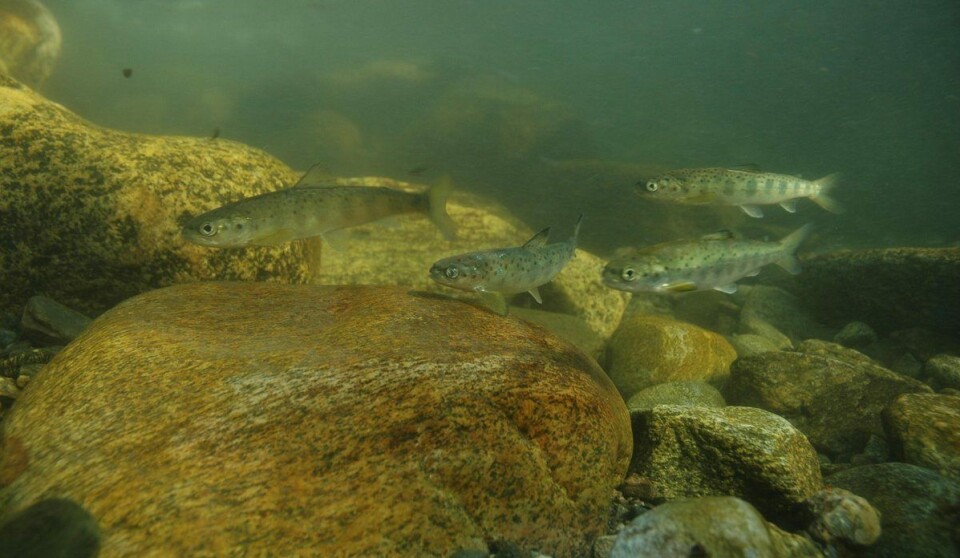
Study links escaped salmon to reduction in wild smolts
Norwegian researchers who carried out at eight-year study have concluded that spawning and hybridisation of escaped farmed salmon can lead to reduced production of wild smolts.
They say their results provide the first documentation for a clear genetic difference in the time of smolt emigration.
The study, which was recently published in the scientific journal Evolutionary Applications, was conducted by researchers from the Institute of Marine Research, NMBU, NORCE, the University of Aarhus, and the University of Bergen.
The lead author is Øystein Skaala from the Institute of Marine Research.
Different genetics
The scientific article is based on a so-called “common-garden” study. This is a study that exposes individuals with different genetics to the same environmental conditions and sees how they perform.
In this case the researchers tested domesticated, hybrid and wild salmon. The experiment was carried out in Guddalselva in Hardanger, where among other things, the genetic background’s influence on smolt production and fitness (relative ability of reproduction) has been studied.
“A recurring presence of a large number of escaped farmed salmon in nature makes it necessary to better understand their influence on the wild salmon,” write the researchers in the article.
254,000 eggs released
There were 254,400 eggs released from 75 families of aquaculture origin, F1 hybrids and wild salmon in Guddalselva, which contained both upstream and downstream traps. In addition, 41,630 hatchery smolts of the same pedigrees were put into the river.
Over eight years, 6,669 out-migrating smolts and 356 returning adult fish were captured and identified genetically on the basis of DNA.
Compared to wild salmon, fish farmed salmon were found to have significantly lower “egg-to-smolt survival” (1.8% versus 3.8% across different cohorts), they migrated earlier in the year (11.8 days on average), but they had only marginally greater smolt sizes and marginally lower smolt ages.
Comprehensive analysis
When returning to fresh water, farmed salmon were significantly larger than wild salmon (2.4 vs. 2.0 kg, 4.8 vs. 3.2 kg and 8.5 vs. 5.6 kg for 1, 2 and 3 sea-winter fish respectively) and had significantly lower survival from smolt to adult (0.41% vs. 0.94% on average).
Overall, eggs to returning adult survival ratios were 1: 0.76: 0.30 and 1: 0.44: 0.21 for wild: F1 hybrid: farming respectively, using two different types of data.
“This study represents the most up-to-date and comprehensive analysis of domestic, hybrid and wild salmon in nature, providing the first evidence of a clear genetic difference in the time of smolt emigration - an adaptive trait believed to be linked to optimal timing for emigration to seawater,” write the article’s authors.
“We conclude that spawning and hybridisation of escaped farmed salmon can lead to reduced production of wild smolt, reduced production of adult wild salmon, as a result of resource competition in freshwater, reduced marine survival of farmed salmon and negative changes in phenotypic properties.”























































